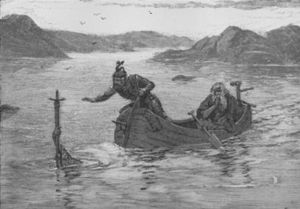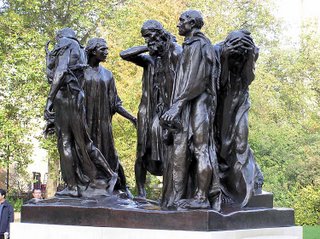
I know all of you are on the edge of your seats to find out whether the box of statues arrived intact from DHL: sorry, no news at present.
The six statues that we brought back in our carry on luggage are sitting, proud but forlorn, atop our mantle. The virgin Mary and baby Jesus are there, but no Joseph; one adoring Magus (I think that’s the singular for Magi), who also looks a bit bewildered at the absence of the star and his fellow royals; the older shepherd is looking around for where that nogoodnick young shepherd has gotten off to; and the donkey and sheep look slightly unhappy at the lack of a hay-filled manger.
Joseph, the young shepherd, the other Magi, the camel, the cow, the innkeeper’s wife, the star, and the manger are crowded together in a dark box probably sitting in U.S. Customs somewhere, wondering “where is all the Christmas spirit around here?” Or maybe, “who the heck is going to glue us all back together now that we’ve been smashed into smithereens?”
My hope remains that all will be reunited in time for the Advent season, and what a lovely scene they will all make in the sun room, awaiting the coming of the baby Messiah. The Magi are usually represented as being present at the stable scene for the birth of Jesus in Bethlehem, but we know from scripture that they followed the star to his house in Nazareth, coming when he was about 2 years old.
However, in the Advent season, all of us await the birth of Jesus on Christmas eve, and so we put the Magi into the stable scene, perhaps to represent that everyone, rich and poor, young and old, human and animal, await the blessed incarnation, God become Man. Some people in France told us that it was very important to keep the baby Jesus out of the scene entirely until late on Christmas eve, so that we, like everyone on that day 2000 years ago, awake on Christmas morning to find the baby, wrapped in swaddling clothes and lying in the manger.
Right now it’s a little bit early to begin the waiting period of the Advent season; I’m simply awaiting the delivery of the infamous box so we can put the entire adventure to rest once and for all. Until then, you’ll just have to wait as well…
I ran across a little bit of Mona Lisa trivia yesterday: the St. Paul Pioneer Press reported that Lisa Gherardini, the subject of Leonardo’s painting, may have been pregnant or had recently given birth when she was painted. Images obtained from infrared reflectography show that she was painted as wearing a fine lace veil around her shoulders of a style worn in 16th century Italy only by pregnant women and new mothers. The veil has apparently been obscured by darkening of the varnish and general aging.
From my perspective, it could be that Leonardo himself painted over the veil after initially painting it in, since it took him 4 years to complete the portrait: “…dang it, she’s gone and gotten pregnant…geez, I just got that veil done, and now she’s not pregnant anymore…holy cow! Pregnant again?...”
FYI, my take on the enigmatic smile is that it took so darned long for Leonardo to finish the portrait that her smile was frozen in place, sort of like what a Dairy Princess looks like at the end of a really long July 4th parade. Two days later, her mother declares in a huff, “wipe that smile off your face!” Continuing to smile enigmatically, she says, “I can’t, it’s frozen this way.” It could happen...
Well, my bike racing season is over for the year. In a blog from Paris, I recall talking about jogging in the Jardin du Luxembourg several days in a row, now almost 2 weeks ago. With all the walking we did after that with David Schlough and on our own, I’ve gone and done something bad to my right knee. I have barely been able to walk on it at all it’s so painful. My doctor checked it out last Monday, and thinks it’s a sprained right medial collateral ligament. I don’t remember jarring it at all, but I probably jogged too long and too hard for my poor old knee joints.
I forget that, while I’m in very good shape for my age, I basically only work out on a road bike, which requires very little knee stabilization. To start jogging 30-50 minutes a day is no problem for my lungs or legs, since I have been riding 8-15 hours a week on the bike. The knees are a different story, being saved from all that pounding by the bike. So, I’ve learned a lesson: don’t ever jog again. No seriously, it’s important to start very easy with any workout program, whether jogging or weights or biking or whatever…
We are currently in Red Wing, MN, a beautiful southern MN Mississippi river town, for a state preservation society meeting that Beth is attending. I’m just tagging along, catching up on some CME and blogging, since I had planned some long bike rides in the fall weather, but decided to let the knee work itself out a bit before getting on the bike again.
Tomorrow evening we’ll be going to the Minnesota Opera’s performance of La Donna del Lago, or Lady of the Lake, by Rossini, the same guy that gave us the “Figaro, Figaro, Figaro” song. La Donna is based on the book length poem by Sir Walter Scott, who also wrote “Ivanhoe,” one of my favorite books of all time. In fact, all of his so-called “Waverly” novels are knockouts, my next favorite being “The Talisman,” set in 14th century Palestine during one of the Crusades.
The poem is set in medieval Scotland, and represents 6 days in the epic struggle between King James V and the powerful Douglas clan. The romantic hero is Malcolm Graeme, and the heroine Helen Douglas, daughter of the chieftain of the Douglas clan, whom the King has banished from his kingdom. They take refuge with Roderick Dhu in his castle in the middle of Loch Katrine, and Helen, I assume, is therefore the Lady of the Lake. In true opera fashion, Roderick, Malcolm, and the mysterious knight James Fitz-James (the name should give him away immediately as King James V himself) all fall in love with Helen. Since I haven’t seen the opera, I don’t know if it ends like the poem does, and either way, I won’t spoil it for you…
I assume that Sir Walter Scott’s title also alludes to the original Lady of the Lake, the student and muse of King Arthur’s wizard Merlin. Actually, the Lady of the Lake is the name of several related characters who play integral parts in the Arthurian legend. These characters' roles include giving King Arthur his sword Excalibur, taking the dying king to Avalon after the Battle of Camlann, enchanting and imprisoning Merlin, and raising Lancelot after the death of his father. Different writers and copyists give her name variously as Nimue, Viviane, Niniane, Nyneve, and other variations. It’s all very romantic and chivalric stuff. I’ll let you know if I come up with any connections between Sir Walter Scott’s Scottish setting and the old Arthurian legendary character(s)…













